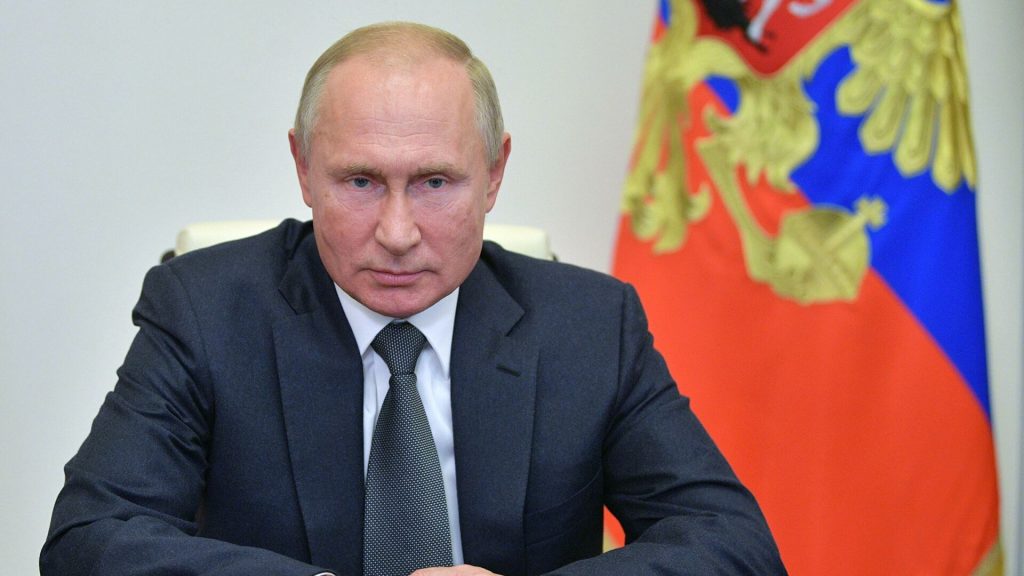
Analysis by Adam Taylor
Reporter
This is bad news for one person in particular. As NATO Secretary General Jens Stoltenberg said Wednesday, Vladimir Putin “wanted less NATO,” and now he’s “getting more NATO on his borders.”
The alliance’s creeping eastern border has been a sticking point for the Russian president for years. While Ukrainian membership was not in the cards anytime soon, Kyiv’s growing relationship with the United States and other NATO powers has been used as a justification for Russia’s decision to invade on Feb. 24.
Now, Ukraine is flush with weapons and other support from NATO member states. And if both Sweden and Finland ascend to membership, the balance of power in Europe has been further tipped against Russia. But while NATO will end up numerically stronger after Russia’s invasion, the war in Ukraine has also brought some of the bloc’s internal contradictions to the surface.
With an enemy to focus on, NATO has a renewed sense of purpose. Just three years ago, French President Emmanuel Macron complained it was facing “brain death.” For years after the Soviet Union collapsed, NATO looked like a military alliance in search of an enemy. As many have recently brought up, Putin and others even suggested bringing Russia into NATO — effectively bringing Moscow into what was founded as an anti-Moscow pact.
There is no doubt after Russia’s invasion of Ukraine which side NATO sees itself on, even if its members are not a direct party to the conflict. Even initial stragglers like Germany have found themselves swept up in support of Ukraine, supplying the country with heavy weaponry despite earlier concerns.
The shift extends beyond the political class, albeit unevenly. A recent Pew poll that looked at 11 NATO member states found that in Britain, Poland, the United States and Belgium, views of NATO had hit record highs. In only two countries, Greece and Italy, views have declined since the war in Ukraine started. Positive views of NATO membership also shot up in both Sweden and Finland before they applied to join.
The war will certainly strengthen NATO. Sweden and Finland both had, to varying degrees, histories of neutrality. Sweden, remarkably, hasn’t fought a war since 1814 and Finland’s policy of “Finlandization” during the Cold War has become a byword for a type of limited sovereignty designed to placate a larger power.
But both nations have long worked to ensure their security and have considerable military strength. Sweden brought back conscription in 2017, winding back a post-Cold War policy that had seen its military downsized. Finland, meanwhile, finalized the purchase of 64 F-35 fighter planes from U.S. company Lockheed Martin early this year, before Russia invaded Ukraine.
n terms of pure geography, if Finland joined NATO it would add another 800 miles to the military alliance’s border with Russia. And NATO member states would control key areas in the Baltic Sea, including Sweden’s Gotland island — not so far across the water from Kaliningrad, Russia’s enclave in Europe.
Even outside of these potential member states, NATO will find itself militarily stronger after the war. President Biden announced a surge of forces toward the bloc’s eastern flank, with U.S. military deployments that included a permanent headquarter in Poland, while Stoltenberg promises to build a new NATO rapid reaction force of 300,000. (Though some leaders were caught off guard by the NATO chief’s mobilization announcement.)
The number of NATO member states that actually spend the target of 2 percent of gross domestic product on defense has significantly increased.
But even with an enemy, NATO is internally divided. Turkey, close to Russia on several key issues, only agreed to not veto the membership bids of Sweden and Finland late Tuesday. It gained some major concessions for doing so. Ankara is already seeking the extradition of alleged terror suspects — members of Kurdish groups or those linked to exiled Turkish cleric Fethullah Gulen — in return.
It may well get more, too: Politico reported Wednesday that there was also an implicit understanding Turkey may get F-16 fighter jets as a consequence of dropping its opposition.
Other problems lie beneath the surface. Pew’s polling suggested drastically divergent views of NATO among the populations of its 30 member states, with a high of 89 percent approval in Poland but a dismal 33 percent in Greece. Even behind the united front on Ukraine, there are differences. France’s Macron angered some of his NATO allies by warning publicly of the risk of humiliating Russia. Further divisions on weapons supplies, sanctions and the potential for Ukraine to join NATO are inevitable.
These divisions could certainly widen, especially if political winds change in member states. Former president Donald Trump, who aides have said discussed pulling the United States out of NATO, said in April that he threatened to abandon the military bloc’s promise of collective security in a conversation with world leaders in 2018.
The focus on Russia could also ultimately distract from other aims. The leaders of Australia, Japan, New Zealand and South Korea attended the Madrid summit as observers, marking the first time that this Transatlantic alliance has brought over some of its trans-Pacific allies, too. A rewritten NATO Strategic Concept directly discussed China — a big change from the last document, which didn’t mention the nation at all.
But while Moscow’s frustrated military campaign in Ukraine has undermined preconceived conception’s about Russian military strength, it may simultaneously suck attention away from the far greater long-term threat in China.
